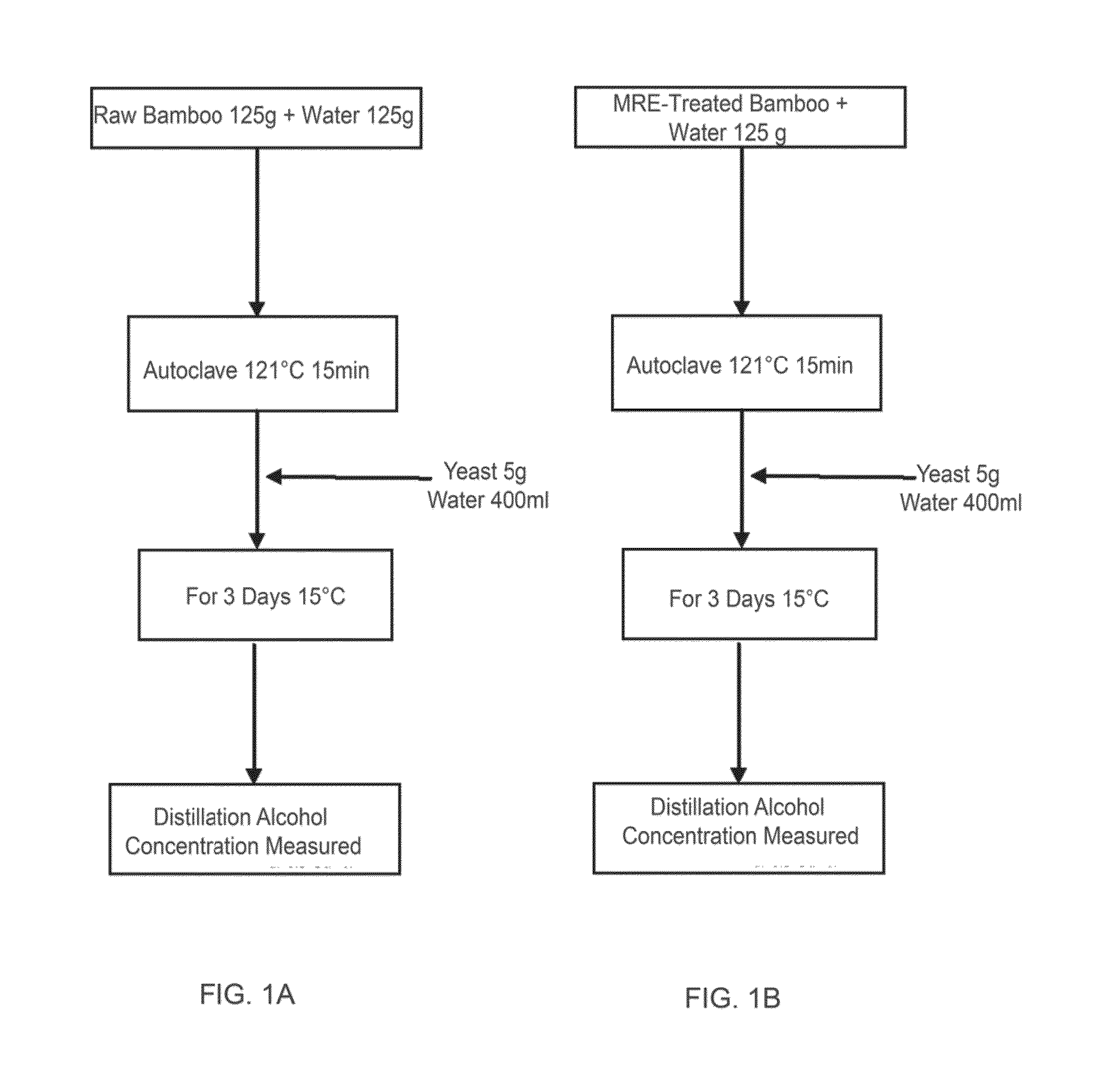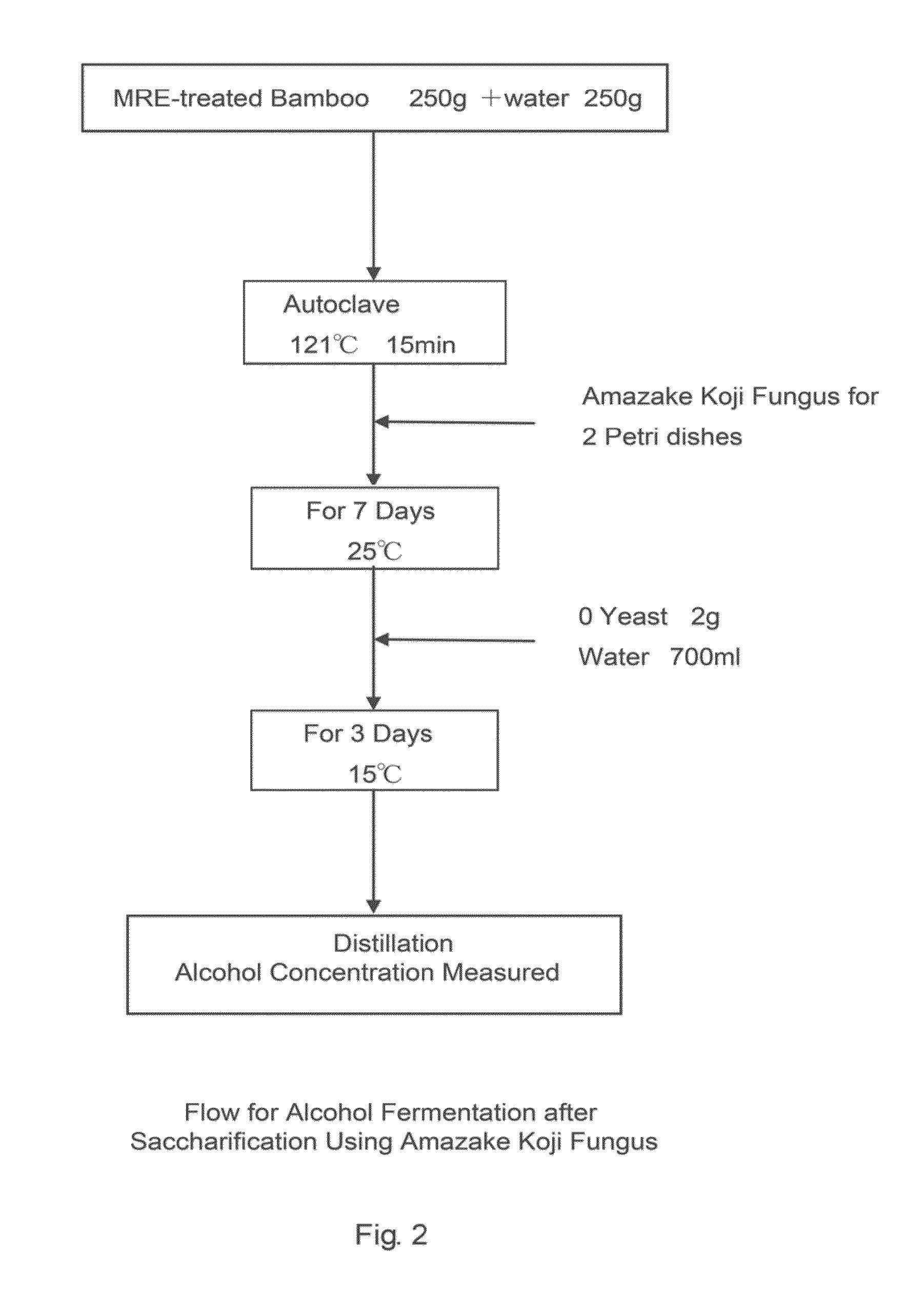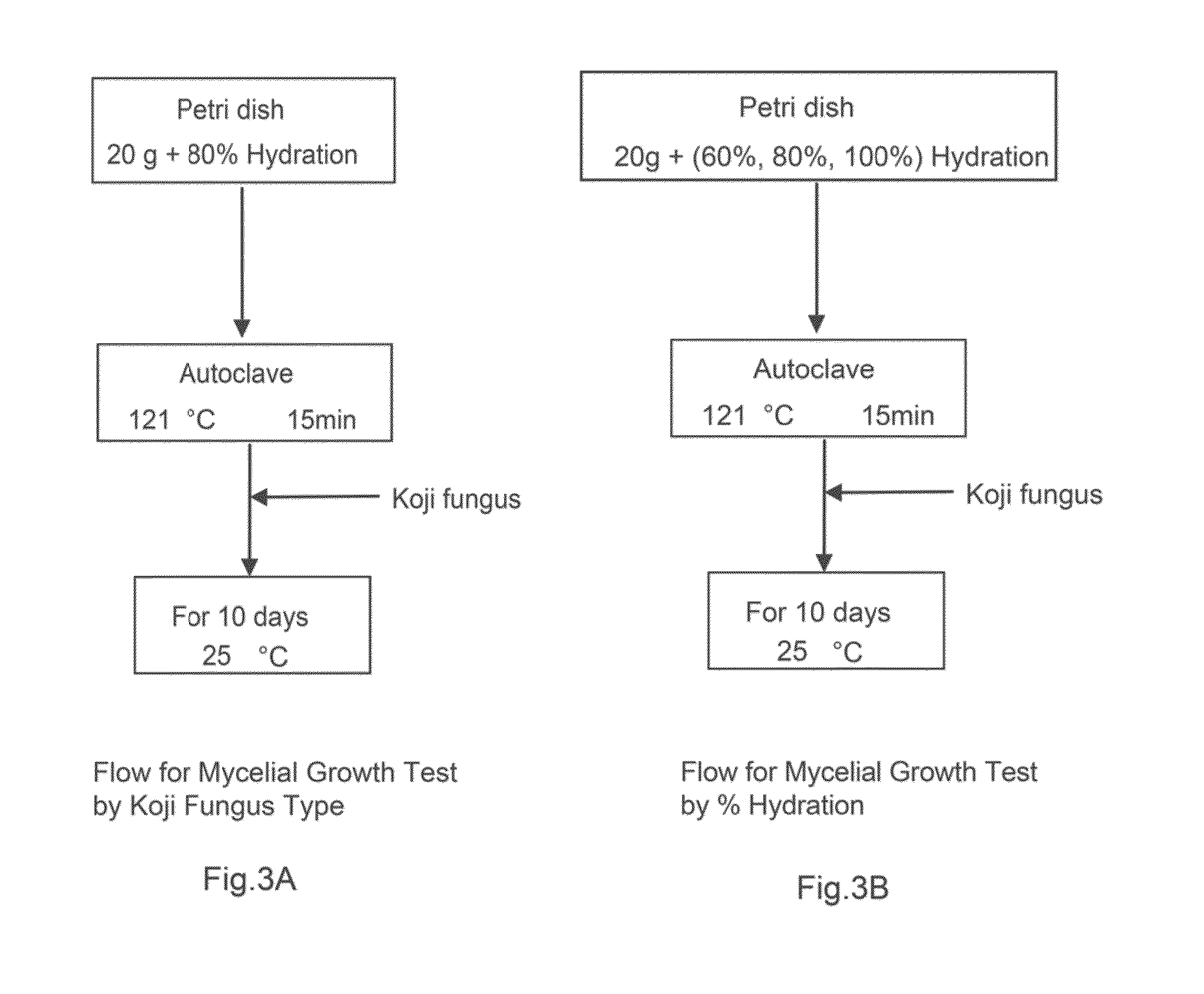Method for producing alcohol using tree as starting material and alcohol solution obtained by same
- Summary
- Abstract
- Description
- Claims
- Application Information
AI Technical Summary
Benefits of technology
Problems solved by technology
Method used
Image
Examples
example 1
Production of an MRE Solution
[0084]Culturing MRE symbiotic bacteria are carried out according to a common culturing method for aerobic gram-positive bacteria. A 1.2 cubic meter culture aeration tank is charged with 1000 liters of water and aerated. The culture aeration tank is fed with 3 kg of fish meal, 3 kg of rice bran, 1.6 kg of oil cake, and 350 g of broth as nutrients, along with appropriate amounts of minerals such as magnesium sulfate and silica. Then the bacterial cells are added thereto to culture the MRE symbiotic bacteria under culturing conditions of a culture pH 6.0 to 6.8 and culture temperature of 25° C. to 35° C., along with an aeration being applied so as to maintain the dissolved oxygen concentration at 0.5 mg / L to 1.2 mg / L.
[0085]On reaching a sufficient bacterial growth and stabilization, all the nutrients for the MRE symbiotic bacteria are stopped so as to be placed under a starvation state, followed by a further aeration under a condition of 15° C. to 35° C., w...
example 2
Method for Producing an MRE-Treated Bamboo
[0087]The bamboo used in the present Example is that which has been treated with the MRE solution according to procedures 1 to 5 as below.
[0088]1. Use 60 L of sieve retained fraction of bamboo for a floor material.
[0089]2. Feed the degradation tank with 40 L of bamboo that has been crushed for the floor material and the MRE solution; and carry out a degradation treatment at 70° C. for 36 hours.
[0090]3. After 36 hours, take out the feedstock from the degradation tank and measure the volume and weight.
[0091]4. Add 20 L water to what was taken out of the degradation tank, and place it into the finish tank.
[0092]5. Treat for 24 hours in the finish tank at 70° C. (not more than 8% moisture) and sieve with a 1 mm mesh sieve. Re-feed the sieve retained fraction to the step 2.
[0093]This flow is shown below:
[0094]Method for Production of MRE-Treated Bamboo
example 3
[0095]Alcoholic fermentability test using baker's yeast
[0096]Experimental materials are as follows.
[0097]MRE enzyme treated bamboo powder (1 mm mesh sieve)
[0098]Pulverized raw bamboo (1 mm mesh sieve)
[0099]Mineral water (“Morinomizudayori” Sold by Coca Cola)
[0100]Amazake-koji fungus (Aspergillus amazake)
[0101]Dry yeast (Product of Nissin Foods Co., Ltd., Nissin Super Cameria)
[0102](1) Method of Fermentation Using Yeast
[0103]Raw bamboo and the MRE-treated bamboo, 125 g each, were thoroughly stirred with 250 g of water (mineral water). This was followed by autoclaving to heat-treat (121° C., 15 min), cooling to room temperature, adding 5 g of dry yeast and 400 ml of sterile mineral water as a feed water (hereafter called feed water), mixing well, and performing an alcoholic fermentation at 15° C. for three days. After the end of the fermentation, the broth was wrung out with cotton fabric and distilled in a pot still, followed by measuring the alcohol concentration. FIG. 1A shows an a...
PUM
 Login to View More
Login to View More Abstract
Description
Claims
Application Information
 Login to View More
Login to View More - R&D
- Intellectual Property
- Life Sciences
- Materials
- Tech Scout
- Unparalleled Data Quality
- Higher Quality Content
- 60% Fewer Hallucinations
Browse by: Latest US Patents, China's latest patents, Technical Efficacy Thesaurus, Application Domain, Technology Topic, Popular Technical Reports.
© 2025 PatSnap. All rights reserved.Legal|Privacy policy|Modern Slavery Act Transparency Statement|Sitemap|About US| Contact US: help@patsnap.com



